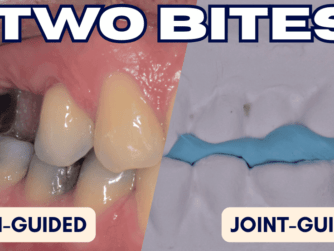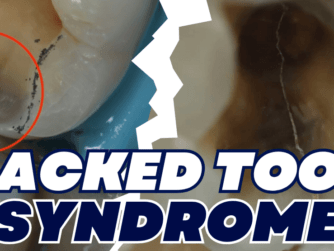Podcast: Play in new window | Download (Duration: 1:07:04 — 94.6MB)
Subscribe: RSS
How do you manage cracks? The ‘Direct Composite Splint Technique’ is kind of controversial. Whilst it may seem intuitive to take cracked teeth OUT of the occlusion, this technique builds composite on top of the cracked tooth in to SUPRA-Occlusion. So what’s the crack? (Sorry) – I brought on the pioneers of DCS, Professor Shamir Mehta and Dr. Subir Banerji who enlighten us about this minimally invasive technique.
Protrusive Dental Pearl: Get the largest magnification loupes you can afford and you can think you can sustain. I personally use 7.5x for EVERYTHING! A sharp probe has a resolution of 40 microns, at 8x magnification the resolution is 25 microns. We need high magnification to treat cracks!
In this episode we discussed:
- What is the Direct Composite Splint Technique? 9:23
- Decision making and Sequencing of Direct Composite Splint Technique 11:05
- DCS Technique protocol in term of of thickness and bonding 16:54
- Aiding disclusion with canine risers 19:55
- DCS Technique Protocol 22:20
- How does DCS Technique work in terms of the relative actual movement? 27:15
- Patient Communication for Cracked Teeth 33:22
- Re-established occlusion after DCS? 42:53
- Are you sure we can leave it in Supra-Occlusion? 50:55
- Should you chase cracks? 54:33
- Favourite Sectional Matrix Bands 56:56
- Tips and Tricks in making patients comfortable 58:25
Check out this paper by Professor Shamir Mehta and Dr. Subir Banerji about DCS Technique
Check out the PG Dip / Master’s in Advanced Aesthetic and Restorative Dentistry:
If you enjoyed this episode, you will love I Hate Cracked Teeth with Kreena Patel







